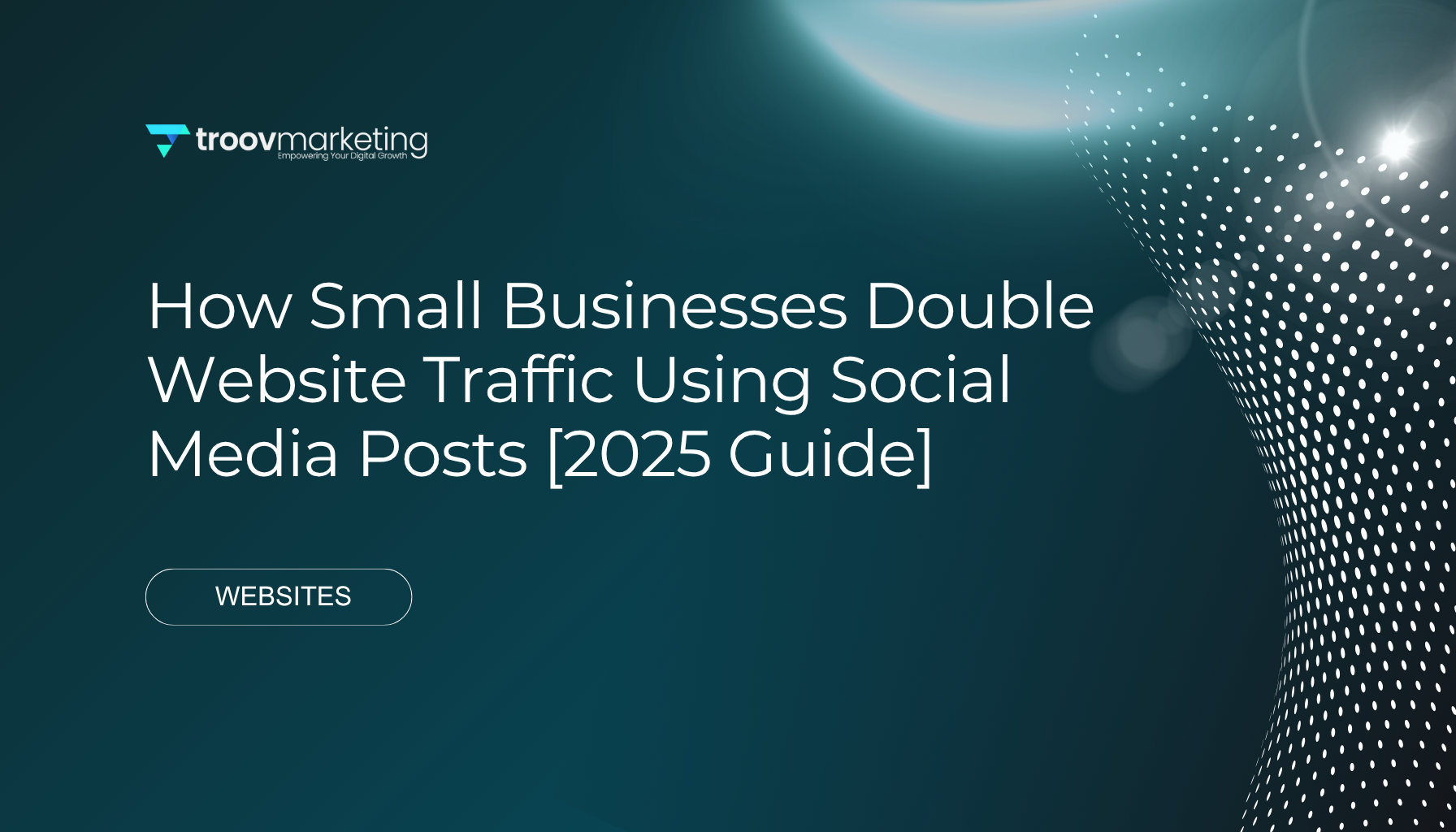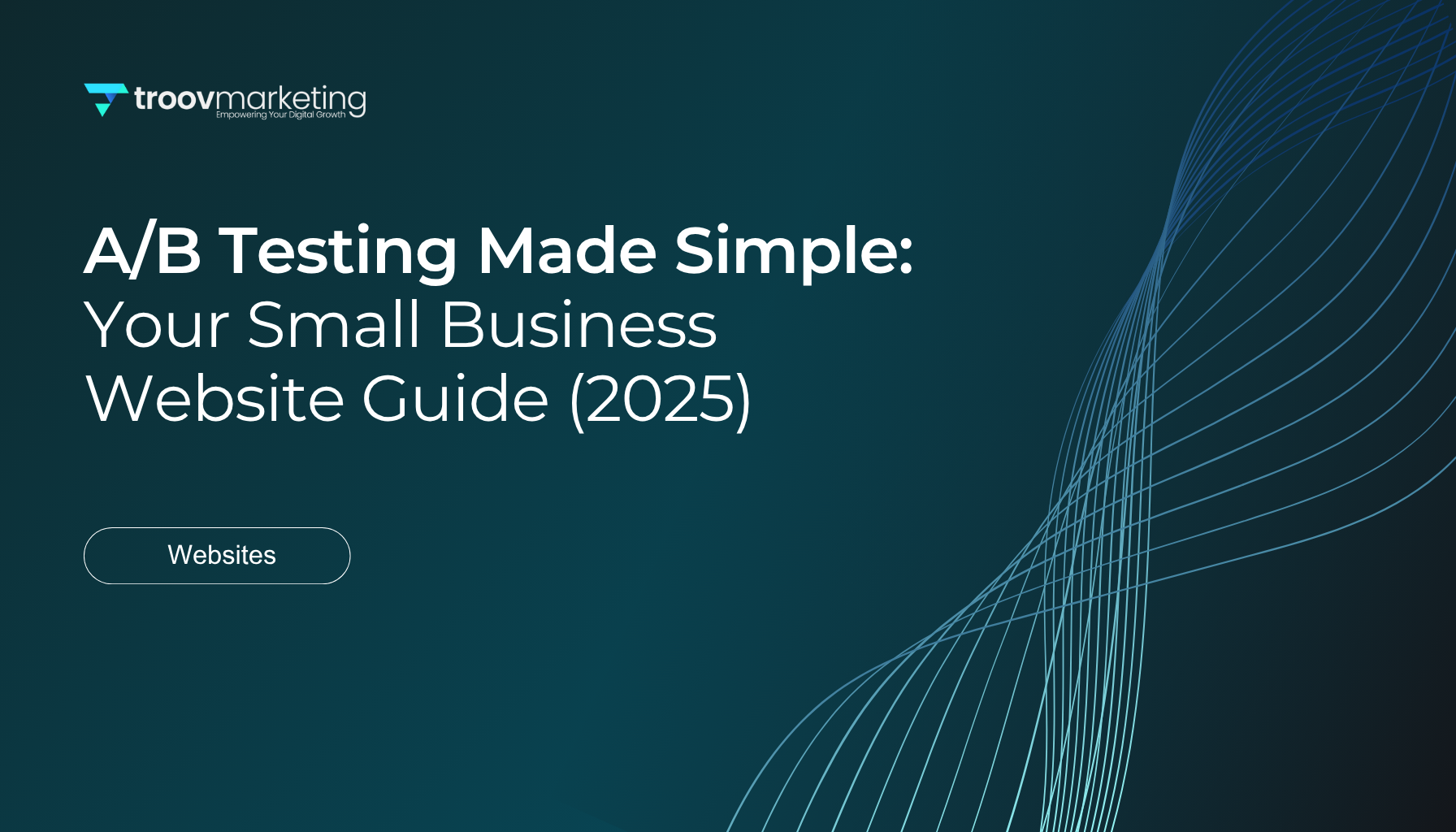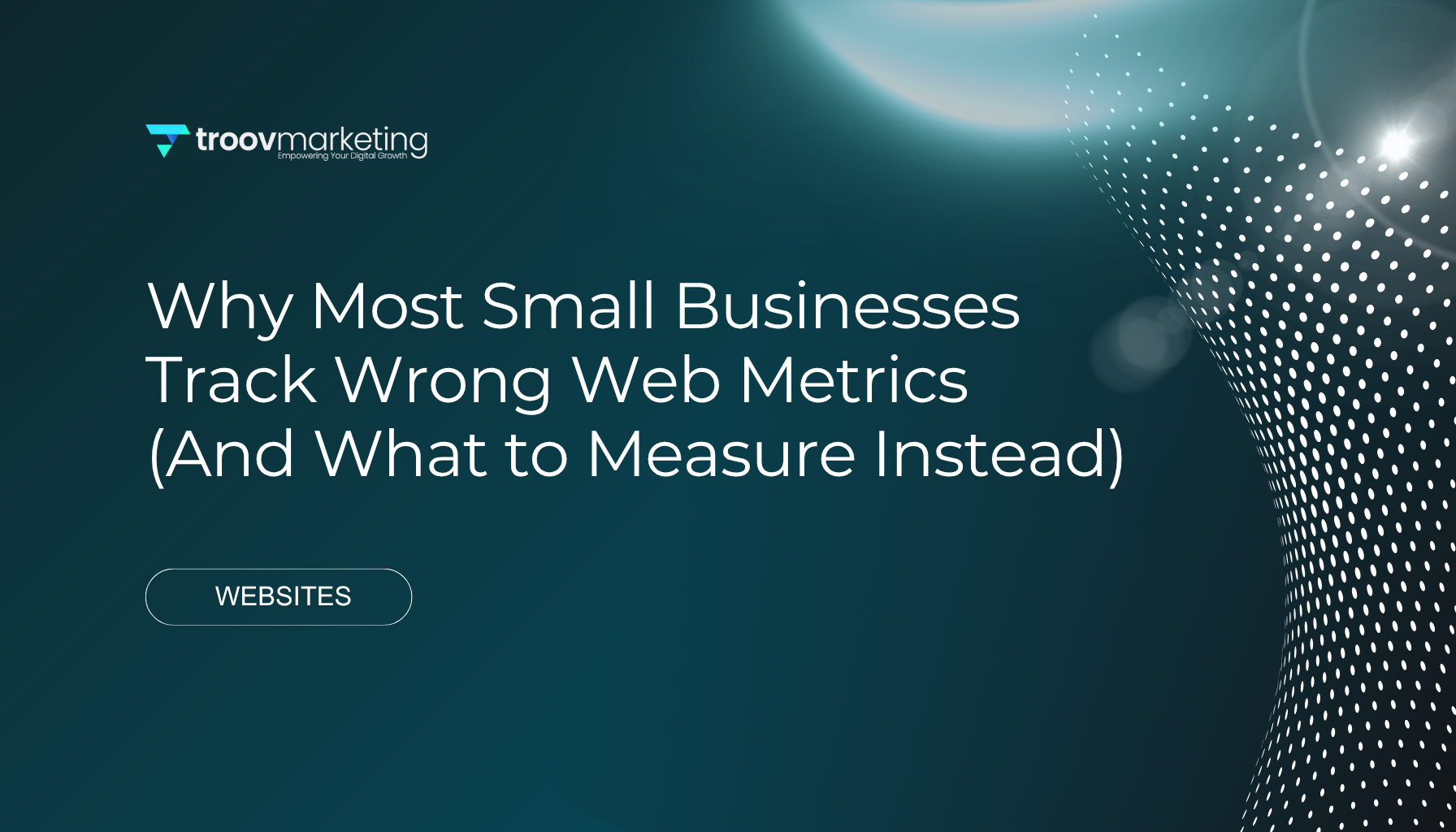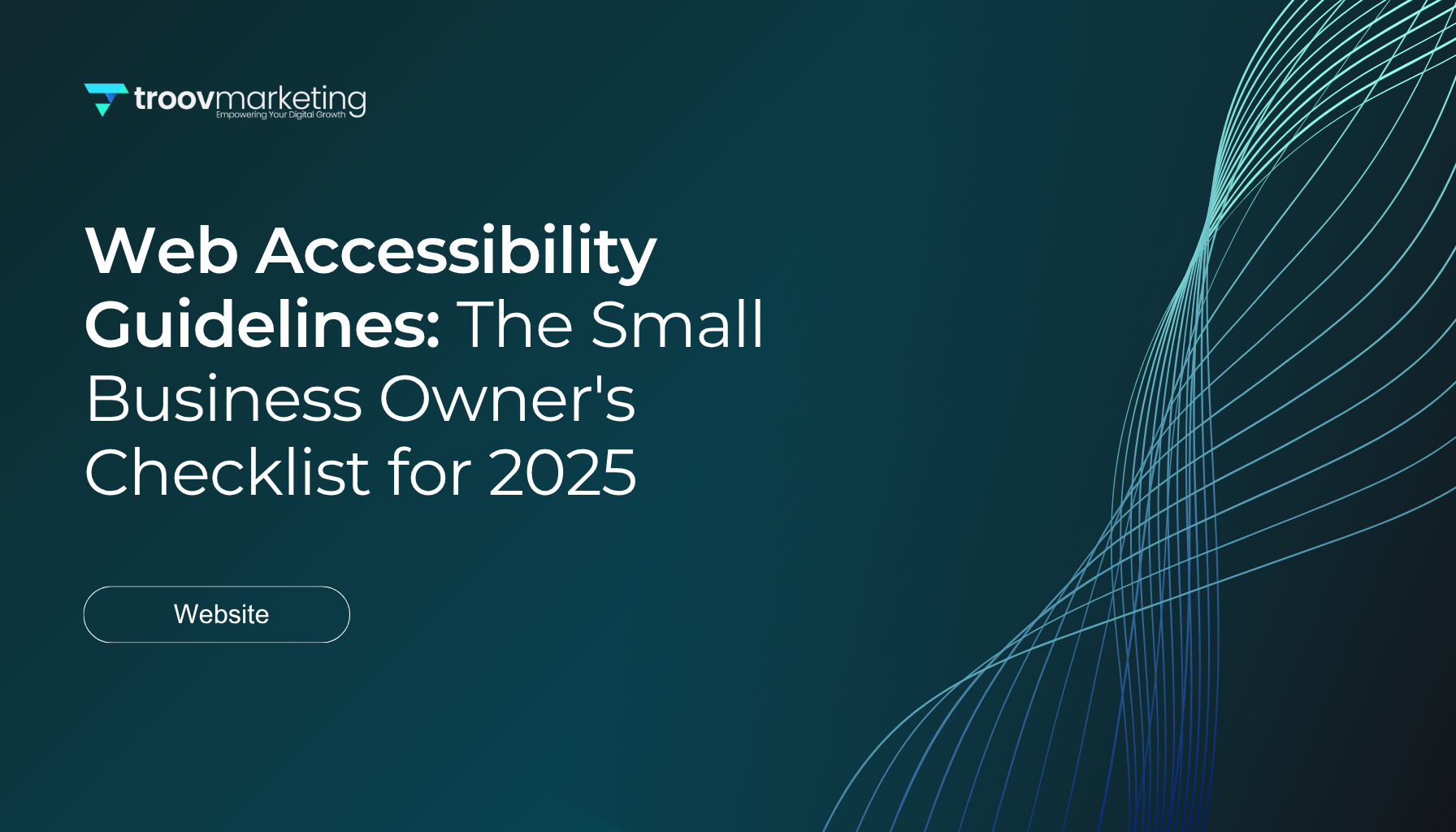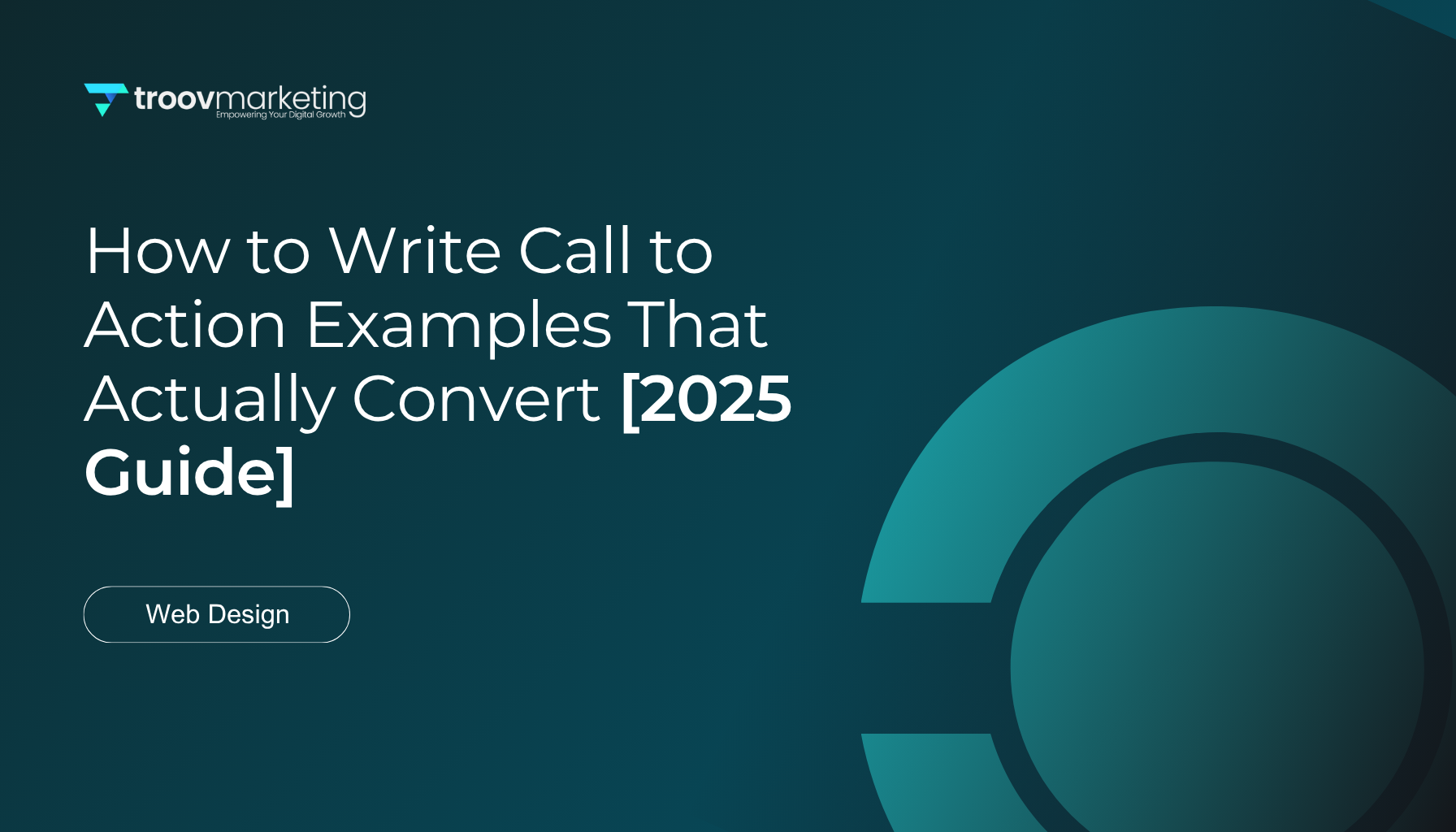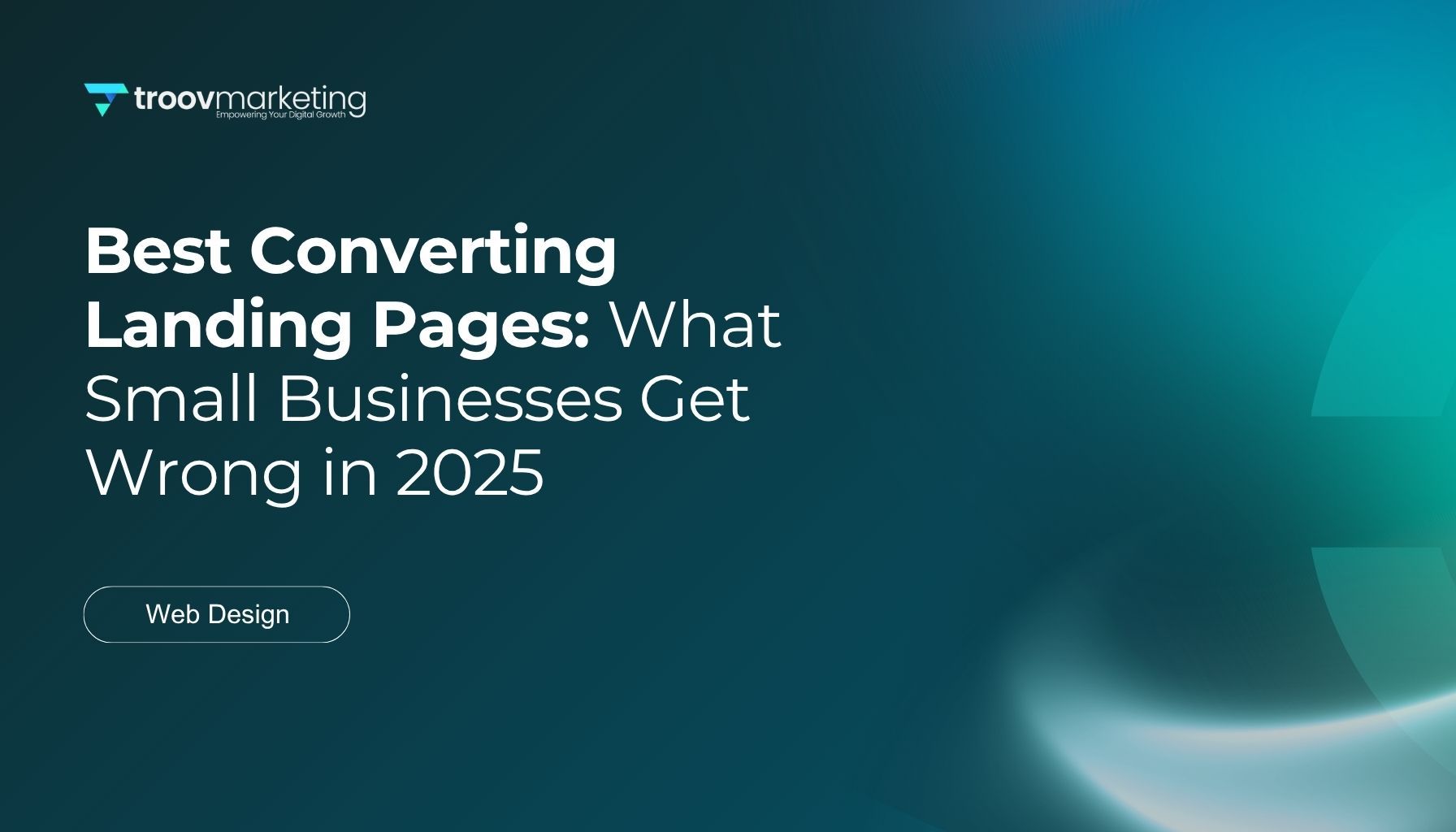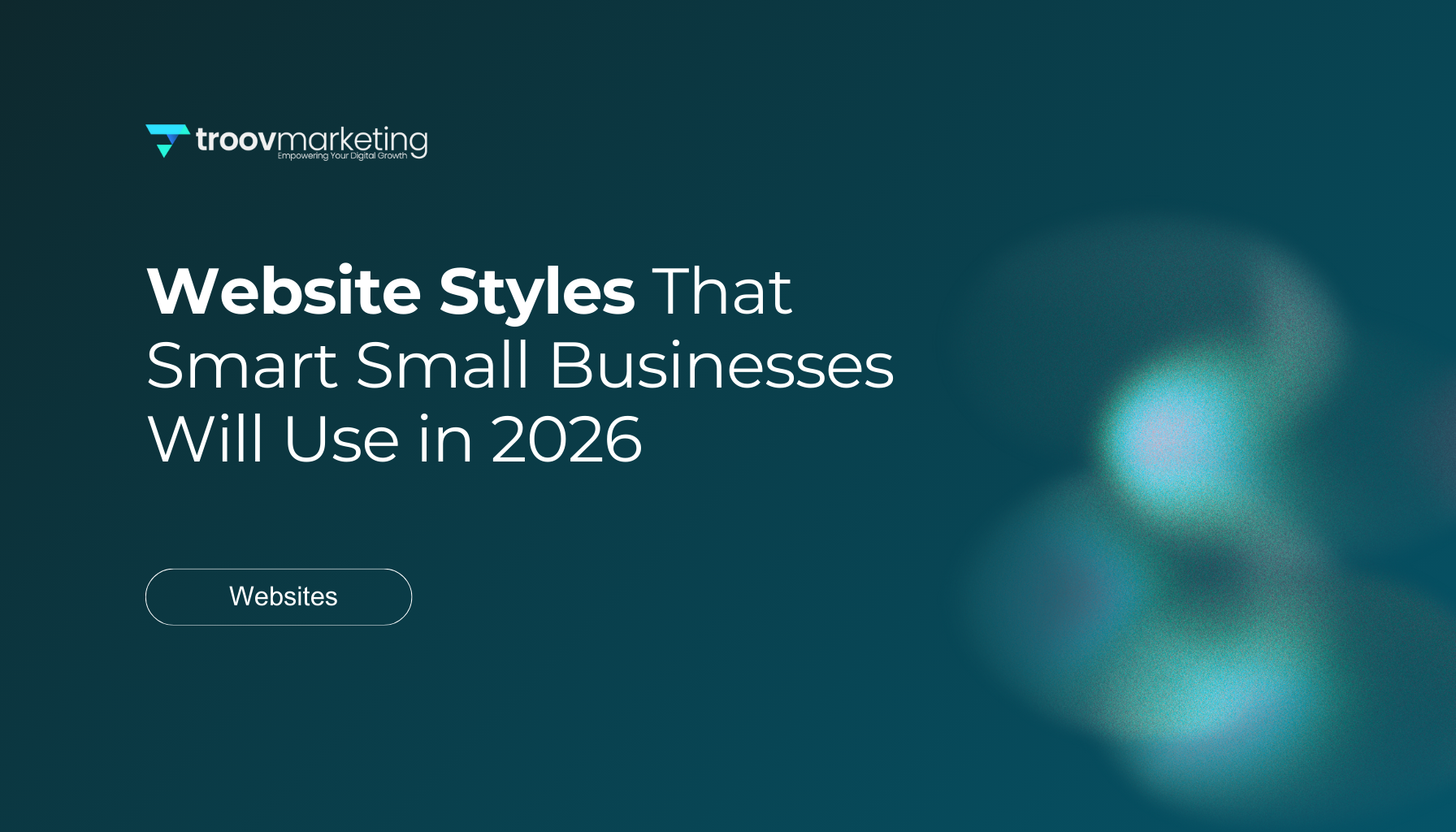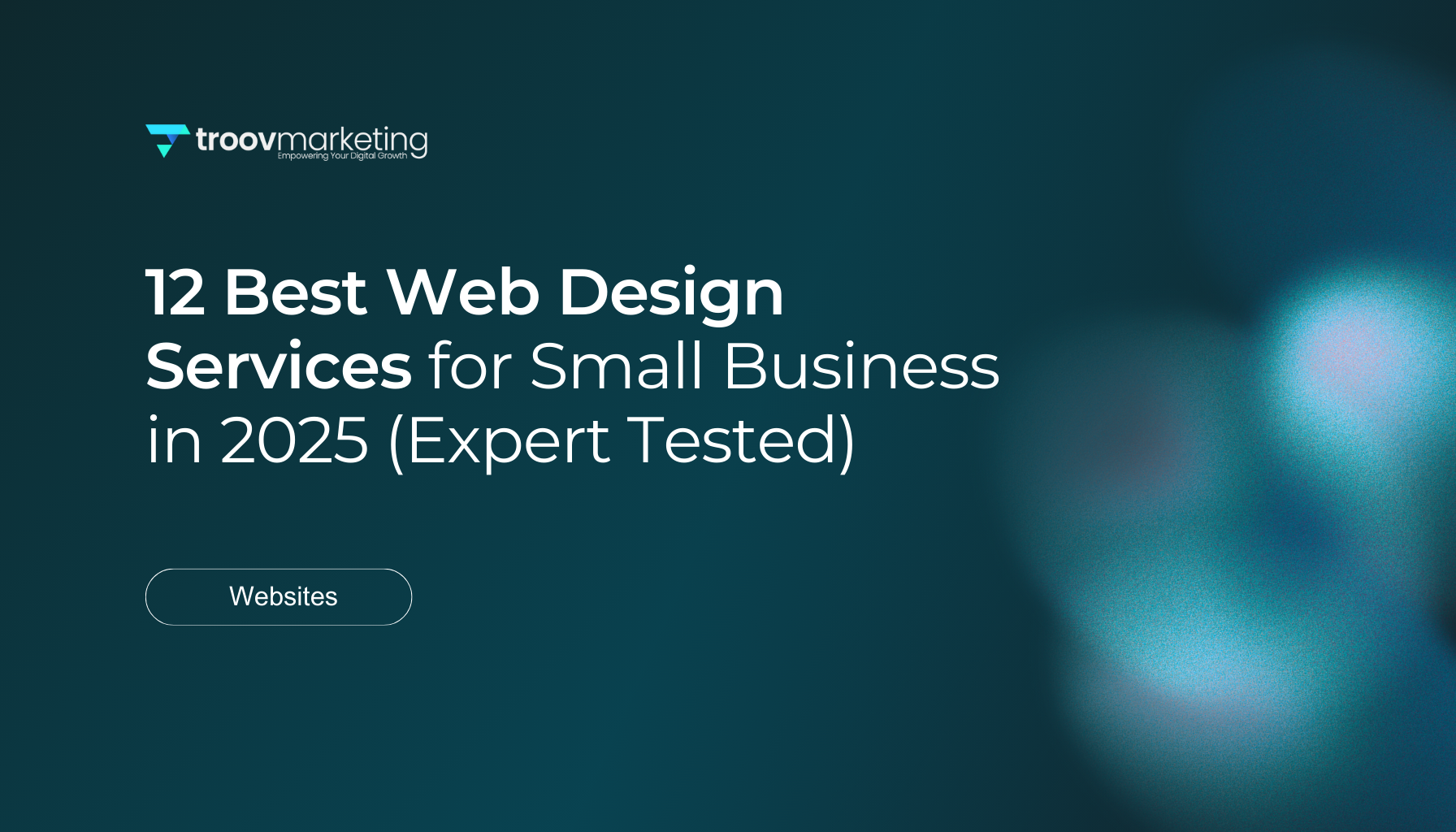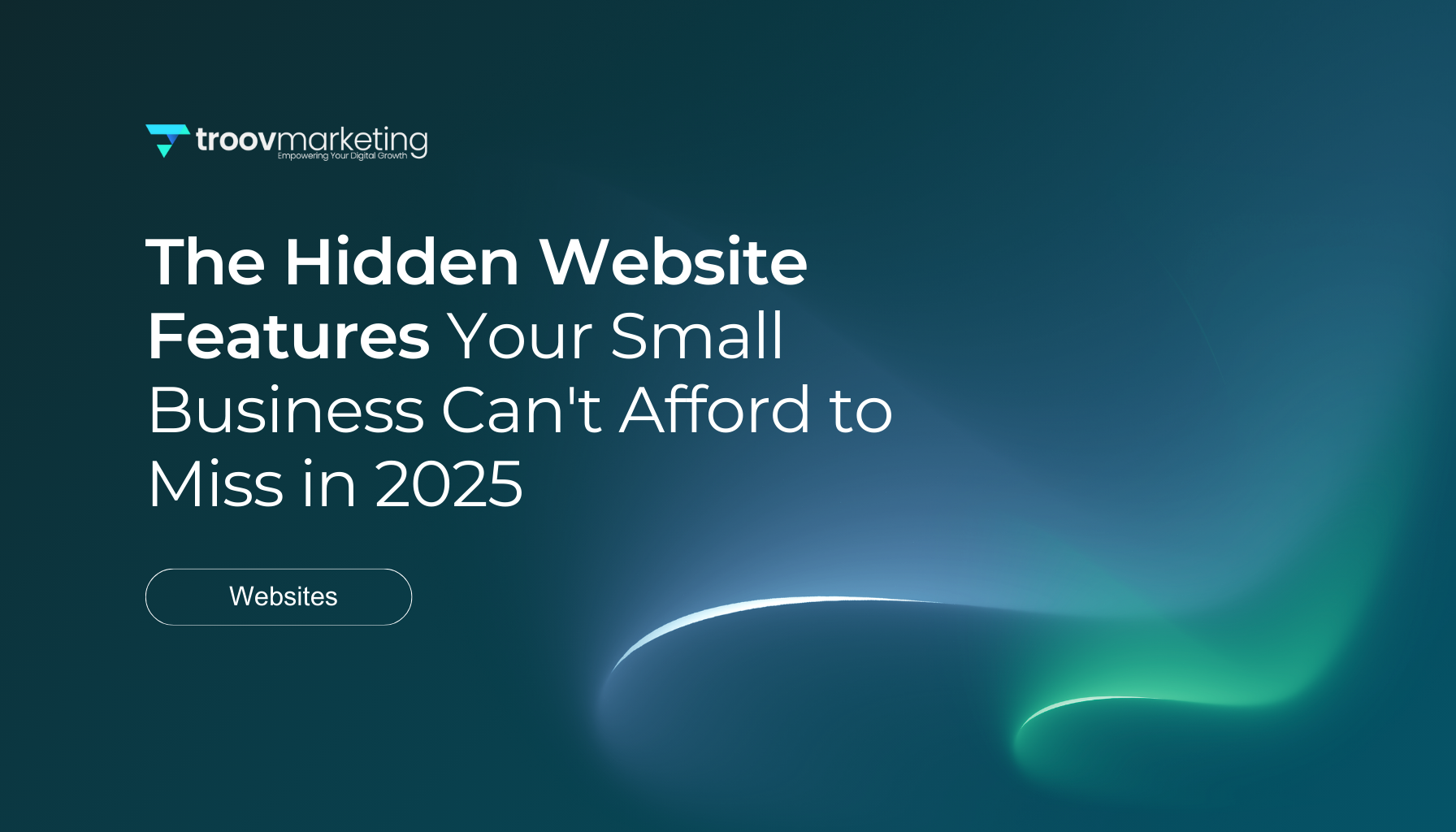Why Your Small Business Website Needs to Load Faster in 2025 [New Data]
Website speed isn't just a luxury anymore—it's crucial to stay in business. A staggering 40% of users abandon sites that take three seconds to load. About 70% of shoppers think about loading time before making their purchase decisions.
Every second matters in today's online market. Users on laptops and desktops leave sites more often when pages take longer than 4 seconds to load. Your revenue takes a direct hit from slow speeds—Amazon found that just 100 ms of delay cuts their sales by up to 1%. Sites that load within one second see three times more conversions than those taking five seconds.
This piece explains why page speed becomes even more vital in 2025. You'll learn practical ways to speed up your website and see why slower sites risk losing ground to competitors. We'll share techniques to optimize your images and give you useful steps to boost your site's speed—whatever your tech background might be.
Why website speed matters more than ever in 2025
Speed has become a vital currency in the ever-changing world of 2025. Better internet infrastructure and device capabilities have raised the bar for acceptable performance.
User expectations are higher than before
Consumers in 2025 just need websites that load instantly. Mobile users expect pages to load in under 2 seconds, and with good reason too. Our brains are hardwired to seek instant gratification, and slow websites frustrate users and make them leave.
Numbers tell the story clearly. Over half of mobile users leave a site that takes more than three seconds to load. Pages loading in 5 seconds show nowhere near the success of those loading in one second, with 2.5 to 3 times lower conversion rates. Every extra second of load time can drop conversion rates by 4.42% on average.
Mobile-first behavior is now the norm
Web traffic from mobile devices has crossed 60%, which changes how we build and optimize websites. Most people browse on smartphones—often with varying connection speeds—making mobile performance the main goal for businesses.
The gap between mobile and desktop performance raises concerns. Desktop sites load in about 2.5 seconds, while mobile sites take 8.6 seconds. This difference matters even more since Google switched to mobile-first indexing, where your mobile site's speed determines how visible you are in search results.
People using phones on the go spend 70% less time on web pages than desktop users. Quick loading and smart content organization help capture and keep mobile users' attention.
Google's Core Web Vitals update
Google's Core Web Vitals have become crucial to website search rankings. These metrics look at the ground user experience in three key areas:
- Largest Contentful Paint (LCP): Shows loading speed—should happen within 2.5 seconds
- Interaction to Next Paint (INP): Measures how fast pages respond—should take less than 200 milliseconds
- Cumulative Layout Shift (CLS): Checks visual stability—should stay under 0.1
These metrics significantly affect search visibility. Sites meeting Core Web Vitals standards see 24% fewer people leaving pages and 8-10% more conversions for every 0.1-second improvement in load time.
Right now in 2025, all but one of these metrics show room for improvement. Only 59% of mobile pages have good LCP scores, while 74% achieve acceptable INP scores, and 72% meet CLS standards. Small businesses can outperform competitors by focusing on these areas.
Sites ignoring these performance standards face more than just frustrated users. Poor Core Web Vitals scores hurt search rankings, organic visibility, and business results. Fast-loading websites get better placement in search results, creating a positive cycle of improved visibility and engagement.
How slow websites hurt small businesses
Small businesses can't afford to waste a single millisecond online. A slow website doesn't just frustrate visitors—it hurts your profits. Studies show that a one-second delay in page load time can result in a 7% reduction in conversions. This can cost businesses millions in lost revenue each year.
Increased bounce rates and lost traffic
The numbers tell a clear story. About 40% of visitors will abandon a website that takes more than 3 seconds to load. This number gets much worse as pages load slower. Research shows that bounce rates jump by 90% when load times go from 1 second to 5 seconds.
Mobile users are even less patient. A whopping 53% of mobile sites lose visitors if they take longer than 3 seconds to load. Mobile users want pages to load in under 3 seconds. Many small business websites don't meet these expectations.
Your visitors won't stick around if your site loads slowly. They'll just hit the back button and visit your faster competitors instead.
Lower conversion rates and sales
Slow sites mean fewer sales. mPulse Mobile's research shows a direct link between loading speed and conversion rates:
- Pages loading in 2.4 seconds had a 1.9% conversion rate
- At 3.3 seconds, conversion rate dropped to 1.5%
- At 4.2 seconds, conversion rate fell below 1%
- At 5.7+ seconds, conversion rate plummeted to just 0.6%
Big companies have seen similar results. Walmart found that for every 1-second improvement in page load time, conversions increased by 2%. COOK boosted their conversions by 7% just by making their pages load 0.85 seconds faster.
Let's talk money: if your online store makes $10 million yearly, a one-second speed boost could add $305,798 to your revenue. For mobile sites, a 1-second delay can drop conversion rates by up to 20%.
Negative brand perception
Slow websites do more than just chase away visitors—they damage your reputation. People judge your business based on how well your website works. A slow site makes you look unprofessional and suggests you don't care about customer experience.
Research shows that 47% of consumers expect a page to load in two seconds or less. Missing this mark hurts your brand. Diona Kidd from Knowmad Digital Marketing puts it this way: "Users perceive a slow or clunky website as a reflection of how your business is run and how much it cares".
The worst part? Customers who leave because of slow loading times rarely come back. Once they link your brand with poor performance, you'll struggle to win their trust again.
Reduced visibility in search engines
Google and other search engines care about user experience. Website speed plays a big role in how they rank search results.
Slow websites rank lower than faster ones in search results. Your competitors show up first, stealing potential customers before they even find your site.
This creates a nasty cycle: slow loading leads to lower rankings, which means fewer visitors, fewer sales, and less revenue. Making your site faster isn't just a technical upgrade—it's crucial for your business success.
How to check if your website is too slow
Your website's speed directly depends on how well you measure its performance. Speed testing helps you spot what slows down your site and shows if your improvements work. Here are the best tools to diagnose speed issues.
Using Google PageSpeed Insights
Google PageSpeed Insights (PSI) stands as the best website speed testing tool in 2025. This free tool checks your site on mobile and desktop devices and gives a score from 0-100. A score above 90 shows good performance, 50-89 needs work, and below 50 indicates poor performance.
PSI's value comes from its mix of lab and field data. The tool gets real-life performance metrics from Chrome users and measures vital factors like First Contentful Paint (FCP), Largest Contentful Paint (LCP), and Cumulative Layout Shift (CLS).
The tool also tracks the experimental Time to First Byte (TTFB) metric to show server response times. You'll get a detailed list of improvements ranked by their potential effect on performance.
Testing with GTmetrix and Pingdom
GTmetrix gives a detailed analysis through performance and structure scores. You'll see waterfall charts that show how elements load and a timeline view of your page load speed. GTmetrix starts testing from Canadian servers, but a free account lets you test from 23 locations worldwide.
Pingdom adds its own insights with performance grades, load times, and content analysis by type. The tool shows exactly how your page loads each element, which helps find specific slowdowns.
These tools use real browsers for testing, unlike other options that give less accurate results. They also have settings that PSI doesn't offer, which makes them great for thorough testing.
Understanding Time to First Byte (TTFB)
TTFB shows the time between asking for a resource and getting the first response byte. This measurement includes redirect time, DNS lookup, connection setup, and request processing.
Your TTFB should stay under 800 milliseconds. Times between 800-1800ms need improvement, while anything over 1800ms shows poor performance. TTFB affects other speed indicators because any delay automatically slows down Largest Contentful Paint and First Contentful Paint.
TTFB isn't a Core Web Vital, but better TTFB times make pages load faster overall. User location and device type can change TTFB results, so you should test from places where your audience lives.
Top reasons your website loads slowly
Website speed optimization starts with finding what slows down your site. Our analysis of thousands of websites reveals four major speed bottlenecks that affect performance in 2025.
Large image files and uncompressed media
Images make up 60-70% of a webpage's total file size, which makes them the biggest factor in loading speed. Today's average webpage contains 21 images that add up to 1.9 MB - more than entire websites from a few years ago. This heavy visual content forces browsers to download huge amounts of data before they can display your page.
The slowdown often begins when users upload oversized images. To cite an instance, content areas that are 1200 pixels wide but use 2400-pixel images force visitors to download twice the needed data. Using incorrect formats like PNG instead of JPEG for photographs also creates unnecessarily large files.
Too many plugins or scripts
Excessive plugins can kill your site's speed. Each plugin adds JavaScript, CSS files, and sometimes fonts that visitors' browsers must download. The situation gets worse when plugins load their resources on every page, even when their features aren't needed.
Third-party scripts for up-to-the-minute data analysis, social media widgets, and advertising can add 500-1500ms to load times or block the main thread up to 1640ms. A basic survey tool like Hotjar adds over 230kb to your page size.
Poor hosting or server response time
Your choice of hosting provider substantially affects website performance. Google wants Time to First Byte (TTFB) at or below 0.8 seconds. Many budget hosting plans miss this target because their servers are overcrowded or use outdated hardware.
Shared hosting creates a "noisy neighbor" problem - other websites on the same server eat up resources your site needs. Cutting costs on hosting while expecting quick loading times works about as well as "building a house on sand and hoping not to have any issues".
Lack of browser caching or CDN
Sites without proper caching force browsers to download all assets on every visit, which slows everything down. Browser caching keeps frequently used data on visitors' devices and reduces repeated server requests.
Missing a Content Delivery Network (CDN) means your origin server must handle visitors from everywhere. CDNs spread your website across global servers and cut loading speed by 30-50% for international users. This matters even more in 2025, as 40.3 million websites now use CDNs to stay competitive.
How to make your website load faster in 2025
Small business websites in 2025 just need a step-by-step plan to boost their loading speed.
Compress and resize images properly
Website images eat up most of your bandwidth. They make up 60-70% of what a webpage weighs. Your images should match their display size - a 500-pixel container needs 500-pixel images. WebP files work better than JPEG or PNG. AVIF saves more than 50% space compared to JPEG. TinyPNG and ImageOptim help you shrink images without losing quality.
Use lazy loading for media
Lazy loading waits to load images and videos until users scroll to see them. You can add the
loading="lazy"
attribute to image and iframe tags. This cuts down initial load time by 40-60%. Content above the fold shouldn't use lazy loading - it could hurt your Core Web Vitals scores.
Minify CSS, JavaScript, and HTML
Minification strips out extra characters from code files. It removes whitespace, comments, and extra semicolons to make files smaller and quicker to load. CSSNano for CSS and UglifyJS for JavaScript can shrink files by 30-40%. Many CDNs will minify your files automatically.
Enable browser caching
Browser caching keeps webpage content in local storage. Users won't have to download the same files again and again. Tell browsers how long to keep different files - images can stay for a year while CSS files last a month. This cuts down bandwidth use and server requests substantially.
Choose a fast and reliable hosting provider
Your website's speed depends on your hosting choice. Look for hosts with server response times under 200ms that rarely go down. NVMe SSD storage reads and writes up to six times faster than SATA SSDs. The best hosts support HTTP/2 and include built-in caching.
Use a Content Delivery Network (CDN)
CDNs spread your website content across servers worldwide. Files load from servers closest to your visitors. This makes pages load 30-50% faster for international users. CDNs are a great way to get extras like automatic minification, GZIP compression, and DDoS protection.
Conclusion
Website speed has become a vital business asset in 2025, moving beyond just technical preferences. This piece shows how every second affects your bottom line. Quick-loading websites are no longer optional - they're essential to stay competitive in today's digital world.
The numbers tell a clear story. Users don't wait around - 40% leave if a site takes over 3 seconds to load. Each extra second drops conversions by 4.42%. These stats show real money losses that small businesses can't ignore.
Speed optimization should be at the core of your digital strategy. Start by checking your site's current speed with Google PageSpeed Insights or GTmetrix. Then take action - compress images, set up lazy loading, minimize code files, use browser caching, get good hosting, and set up a CDN.
Mobile users make up most web traffic now. Your speed improvements should focus on mobile performance to keep users happy and meet Google's mobile-first indexing requirements.
Not sure if it's worth the effort? Sites that meet Core Web Vitals standards see 24% fewer people leaving and much higher conversions. Your competitors who skip these improvements will keep losing visibility and sales.
Your website is your business's digital storefront. Fast, responsive pages build trust with visitors and turn them into customers. These strategies will boost your technical scores and create the smooth user experience that stimulates business growth in 2025 and beyond.
Key Takeaways
Website speed is no longer optional—it's a critical business necessity that directly impacts your revenue, search rankings, and customer perception in 2025.
• 40% of users abandon websites taking over 3 seconds to load, with each additional second reducing conversions by 4.42%
• Mobile performance is now paramount as 60% of web traffic comes from mobile devices with stricter speed expectations
• Google's Core Web Vitals directly affect search rankings, making speed optimization essential for visibility and organic traffic
• Image optimization offers the biggest impact since images account for 60-70% of webpage size—compress, resize, and use modern formats like WebP
• Simple technical fixes deliver major results: enable browser caching, use lazy loading, minify code, and implement a CDN for 30-50% speed improvements
The bottom line: Fast websites generate more traffic, higher conversions, and better search rankings. Slow sites lose customers to competitors who prioritize speed. Start with free tools like Google PageSpeed Insights to measure your current performance, then systematically implement these optimization strategies to transform your website into a revenue-generating asset.
FAQs
Q1. How does website speed impact small businesses in 2025? Website speed significantly affects small businesses, with 40% of users abandoning sites that take over 3 seconds to load. Each additional second of load time can reduce conversions by 4.42%, directly impacting revenue and customer retention.
Q2. What are the key factors slowing down websites in 2025? The main culprits for slow websites include large, uncompressed image files, excessive plugins or scripts, poor hosting or server response times, and lack of browser caching or Content Delivery Network (CDN) implementation.
Q3. How can small businesses check if their website is too slow? Small businesses can use tools like Google PageSpeed Insights, GTmetrix, and Pingdom to analyze their website's speed. These tools provide detailed performance metrics, scores, and recommendations for improvement.
Q4. What are some effective ways to make a website load faster in 2025? To improve website speed, businesses should compress and resize images properly, use lazy loading for media, minify CSS, JavaScript, and HTML, enable browser caching, choose a fast and reliable hosting provider, and implement a Content Delivery Network (CDN).
Q5. Why is mobile website performance crucial in 2025? Mobile performance is critical because over 60% of web traffic now comes from mobile devices. With Google's mobile-first indexing, mobile site performance directly affects search rankings and visibility, impacting overall business success.
